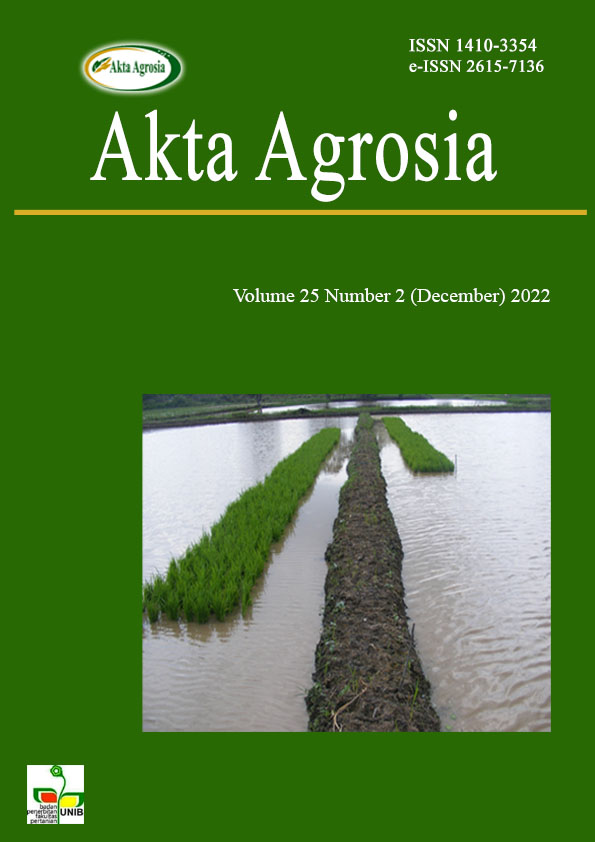Main Article Content
Abstract
Pests are controlled in oil palm plantations by using biological agents to achieve higher productivity of fresh fruit bunches (FFB) of oil palm (Elaeis guineensis Jacq.). This study aims to create a modeling pattern for oil palm FFB productivity based on application data of biological agents at several levels of planting age. The research was conducted in Pelalawan, Riau, namely on young plants, juvenile plants, mature plants and old plants on mineral soil. The data used are the application data of the biological agents Tyto alba, Antigonon leptosus and Turnera subulata. Data were analyzed using Cobb Douglas multiple linear regression and correlation analysis. The results of the regression analysis are used to build a model for predicting FFB productivity patterns using Stella Software. The results of the model regression analysis showed that the coefficient of determination was obtained at 0.265, meaning that together the variables Antigonon leptosus, Tyto alba and Turnera subulata affected FFB productivity by 26.5%. The results of the regression analysis showed that the effect of each Antigonon leptosus, Tyto alba, and Turnera subulata increased by 1%, so FFB productivity increased by 0.018, 0.024, and 0.028%, respectively. The modeling pattern for the development of biological agents shows that FFB productivity will increase and start to decrease at the ages of 14 - 30 years in young, juvenile, mature, and old plants. The total rate of increase from the application of biological agents is 0.047%.
Article Details
Copyright (c) 2023 Salmiyati Salmiyati, Budi Kuncahyo

This work is licensed under a Creative Commons Attribution-ShareAlike 4.0 International License.
Authors who publish with this journal agree to the following terms:
- Authors retain copyright and grant the journal right of first publication with the work simultaneously licensed under a Creative Commons Attribution License that allows others to share the work with an acknowledgement of the work's authorship and initial publication in this journal.
- Authors are able to enter into separate, additional contractual arrangements for the non-exclusive distribution of the journal's published version of the work (e.g., post it to an institutional repository or publish it in a book), with an acknowledgement of its initial publication in this journal.
- Authors are permitted and encouraged to post their work online (e.g. in institutional repositories or on their website) prior to and during the submission process, as it can lead to productive exchanges, as well as earlier and greater citation of published work (See The Effect of Open Access).
